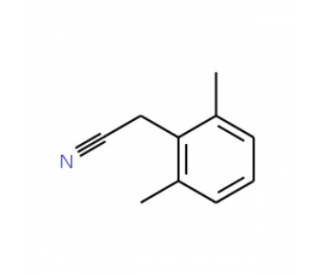详细说明
Purity
>95%, by SDS-PAGE under reducing conditions and visualized by silver stain
Endotoxin Level
<1.0 EU per 1 μg of the protein by the LAL method.
Activity
Measured by its ability to cleave a fluorogenic peptide substrate, Mca-SEVNLDAEFRK(Dpn)RR-NH 2 (Catalog # ). The specific activity is >3,000 pmol/min/µg, as measured under the described conditions. See Activity Assay Protocol on www.RnDSystems.com
Source
Mouse myeloma cell line, NS0-derived Leu21-Ser594 (Thr75Ile and Ile432Val), with a C-terminal 10-His tag Accession # Q61847
Accession #
N-terminal Sequence
AnalysisLeu21
Structure / Form
Pro form
Predicted Molecular Mass
67 kDa
SDS-PAGE
80-83 kDa doublet, reducing conditions
3300-ZN |
| |
Formulation Supplied as a 0.2 μm filtered solution in Tris, NaCl and Glycerol. | ||
Shipping The product is shipped with polar packs. Upon receipt, store it immediately at the temperature recommended below. | ||
Stability & Storage: Use a manual defrost freezer and avoid repeated freeze-thaw cycles.
|
Assay Procedure
Materials
Activation Buffer: 50 mM Tris, 150 mM NaCl, 10 mM CaCl2, 0.05% (v/v) Brij-35, pH 7.5 (TCNB)
Assay Buffer: 50 mM Tris, pH 8.0
Recombinant Mouse Meprin beta Subunit/MEP1B (rmMEP-1B) (Catalog # 3300-ZN)
Trypsin (Sigma, Catalog # T-1426)
AEBSF (Catalog # ) (100 mM stock in water)
Substrate MCA-Ser-Glu-Val-Asn-Leu-Asp-Ala-Glu-Phe-Arg-Lys(Dnp)-Arg-Arg-NH2 (Catalog # )
F16 Black Maxisorp Plate (Nunc, Catalog # 475515)
Fluorescent Plate Reader (Model: SpectraMax Gemini EM by Molecular Devices) or equivalent
Dilute rmMEP-1B to 200 µg/mL in Activation Buffer.
Dilute Trypsin to 20 µg/mL in Activation Buffer.
Mix equal volumes of rmMEP and Trypsin for final concentrations of 100 µg/mL and 10 µg/mL respectively.
Incubate at 37 ºC for 2 hours.Stop reaction by adding AEBSF to a final concentration of 1 mM.
Dilute rmMEP-1B to 0.025 ng/µL in Assay Buffer.
Dilute Substrate to 20 µM in Assay Buffer.
Load 50 µL of 0.025 ng/µL rmMEP-1B in the plate, and start the reaction by adding 50 µL of 20 µM Substrate. Include a Substrate Blank containing Assay Buffer and Substrate.
Read at excitation and emission wavelengths of 320 nm and 405 nm (top read), respectively in kinetic mode for 5 minutes.
Calculate specific activity:
Specific Activity (pmol/min/µg) = | Adjusted Vmax* (RFU/min) x Conversion Factor** (pmol/RFU) |
| amount of enzyme (µg) |
*Adjusted for Substrate Blank
**Derived using calibration standard MCA-Pro-Leu-OH (Bachem, Catalog # M-1975).
Per Well:
rmMEP1B: 0.00125 µg
Substrate: 10 µM
Background: Meprin beta Subunit/MEP1B
Meprins are multimeric proteases composed of alpha and beta subunits, which are members of the astacin family of zinc endopeptidases (1, 2). Both subunits form disulfide‑linked homo- or heterooligomers, which are also referred to as meprin A (composed of alpha subunits with or without beta subunits) and meprin B (composed of beta subunits only) (3). Although the two subunits share 42% identity in their amino acid sequence, they differ significantly in their oligomeric structure, post-translational processing and subsequently cellular location, and substrate and peptide bond specificity (4). The 704 amino acid sequence of mouse meprin beta subunit precursor consists of a signal peptide (residues 1 to 20), a pro region (residues 21 to 62), and a mature chain (residues 63 to 704) containing following domains, catalytic (residues 63 to 260), MAM (residues 261 to 430), MATH (residues 431 to 586), EGF-like (residues 607 to 647), transmembrane (residues 655 to 678), and cytoplasmic (residues 679 to 704). The pro enzyme terminating at residue 594 was expressed and the secreted protein purified from conditioned medium. The amino acid sequence has Ile and Val at position 75 and 432 instead of Thr and Ile, respectively. After trypsin treatment, the activated enzyme cleaved a flurogenic peptide, which contains Asp and Glu, the preferred residues found in the P1’ and P1 sites (3).
References:
Bond, J.S. and R.J. Beynon (1995) Protein Sci. 4:1247.
Stocker, W. et al. (1995) Protein Sci. 4:823.
Bertenshaw, G.P. et al. (2001) J. Biol. Chem. 276:13248.
Ishmael, F.T. et al. (2005) J. Biol. Chem. 280:13895.
Entrez Gene IDs:
4225 (Human); 17288 (Mouse)
Alternate Names:
EC 3.4.24.63; endopeptidase-2; MEP1B; meprin A subunit beta; meprin A, beta; Meprin B; Meprin beta Subunit; N-benzoyl-L-tyrosyl-p-amino-benzoic acid hydrolase beta subunit; N-benzoyl-L-tyrosyl-P-amino-benzoic acid hydrolase subunit beta; PABA peptide hydrolase; PPH beta











 粤公网安备44196802000105号
粤公网安备44196802000105号